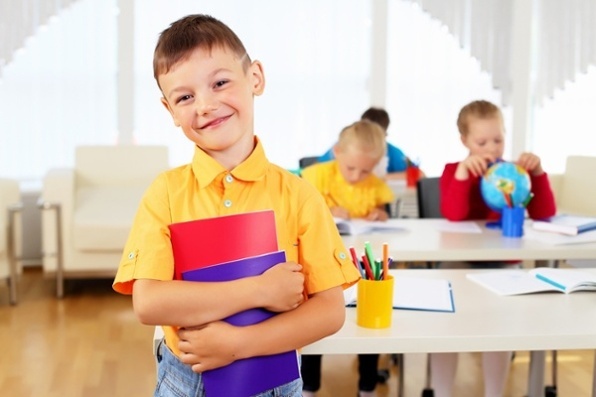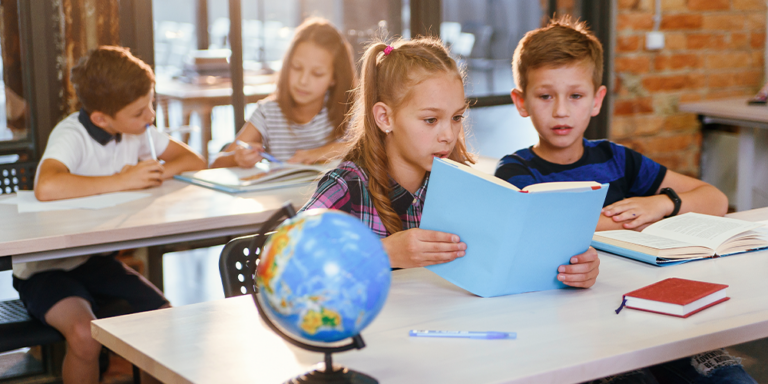According to my Google search, ideal is defined as, “satisfying one’s conception of what is perfect; most suitable.”
Perfect? Ha! This is the standard we all strive for and never quite reach. While “perfect” may seem a bit far-fetched, I do believe we can create the “most suitable” environment for students who need a self-contained classroom. (A self-contained classroom is a smaller setting with fewer students managed by a special education teacher where students with special needs might spend most their day to receive a variety of instruction depending on the individual need of the student.)
To provide you, the reader, with practices that actually WORK in the classroom, I asked a few of my favorite special education teachers from Delano Public Schools (MN) to help me. Read on to find out what they had to say.
Amy Glitsos teaches in a setting three program for students with mild to moderate cognitive disabilities in grades 5-12. (A setting three program consists of students with special needs spending more than 60% of their day outside a regular classroom.) Amy’s students move in and out of her classroom throughout the day, but they most receive reading, writing and math instruction from her. Her classroom tends to be a landing place for them as well. Heather Walberg teaches in self-contained program at the elementary level, and her students range in disabilities from mild to profoundly cognitively impaired. Julie Semeizer also teaches in a self-contained program for students with moderate to profound disabilities at the middle school and high school level. Both Julie and Heather’s students spend most their day in the special education classroom. All three of these teachers have multiple years of experience and a solid knowledge base. Plus, they have shown that they can create these classrooms.
I bet you are wondering what they had to say?! Without further ado, here are thoughts and ideas from three amazing special educators on creating the “most suitable” self-contained classroom.
- Develop clear and consistent routines and procedures. All three of them listed clear and consistent routines and procedures as their first thought (when asked separately!).This can decrease behaviors and minimize the cognitive load of the students allowing for more space/brain power to learn content.
- Take time to reflect on everything your students do from the time they arrive until the time they leave. Develop routines for each step in the day.
- Train paraprofessionals on the importance of supporting the routines in the classroom.
- Be Flexible-Every single child is an individual. We must be willing to look at the strengths, needs and interests of EACH child when we develop programming to help students be successful!
- Schedule time to plan and teach activities, routines and independence. You must allow time for students to repeatedly practice these skills. This makes me want to develop a way to clone these great teachers!
- Use a structured work system (like TEACCH) as these systems teach the student to work independently, and independence should be our goal, right?
- Get Organized!
- Try using a big pocket organizer to hold work from the previous day for students to complete during study time.
- Everything should have its place. Try to label and use visuals when possible. Take a look at the Boardmaker products.
- Check out The Special Educators Toolkit by Cindy Golden. This book contains some excellent ideas for organizing special education classrooms.
- Develop designated spaces for:
- Group work/instruction
- Independent work
- Calming (Kids and adults need a space to get away from the noise and movement of others.)
- Free time
- Teach the students the expectations of each designated space. If students understand the expectations, this will increase their level of independence when accessing the space. Additionally, it can decrease over-reliance on paraprofessionals to direct them to the space and redirect behavior in the space.
- Take your students’ sensory needs into account when creating your classroom. Download our helpful guide that details sensory “sensitive” practices.
- Make sure the room is not overly cluttered. Too much visual stimuli can be difficult for students.
- You may consider covering fluorescent lights and using lamps or natural light when possible.
- Quiet and calm is good most of the time except during periods of active learning.
- Encourage community in your classroom.
- Have a morning meeting every day!
- Plan a common activity (i.e. snack or crafts) a few times a week to practice social skills and increase friendships.
- Find ways to celebrate the individuals in your classroom! You could do a “student of the month” or “get to know me” posters. Students will feel valued and special!
It is my hope that you can take a few of these ideas and implement them in your classroom. Remember, we may not be able to create the perfect self-contained classroom, but my bet is with your level of dedication, we can come very close! Share your ideas below! We’d love to hear from you.
***






